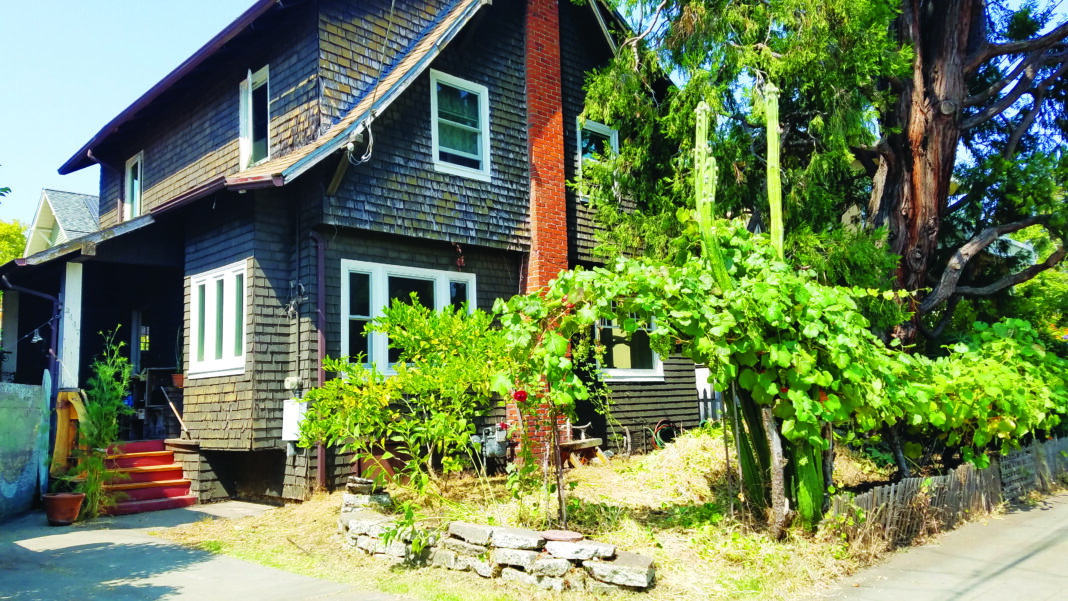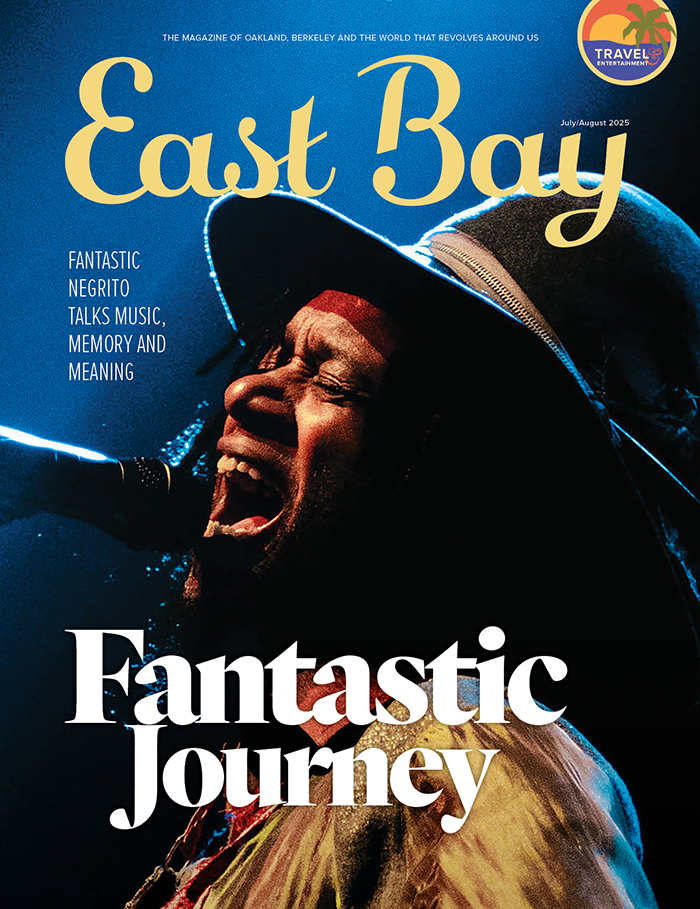The East Bay Permanent Real Estate Cooperative
East Bay Permanent Real Estate Cooperative Director Noni Session is rarely asked to describe her dream landscape for Oakland and the broader Bay Area. Having demonstrated housing crisis foresight by founding, and in 2018 launching, the community-centered development cooperative known as EB PREC that permanently removes land and housing from the speculative real estate market to establish affordable, community-controlled co-op housing and mixed-use projects, the assumption is of a pinnacle reached, a vision fulfilled.
EB PREC began with the ability, under California law ABA 16, to sell limited, five-year term shares invested in equity housing cooperatives and community land trust projects. Sold to non-accredited individuals with a projected 1.5% return over each five-year term, the original model aimed to purchase properties primarily in Oakland, but extends in 2021 to encompass the East Bay and includes varying levels of participation: investors, community members, resident and staff owners, and board members. Created with the People of Color Sustainable Housing Network—a network for people of color building collective, affordable Bay Area housing communities—and the Sustainable Economies Law Center—a group providing legal tools to community-developed projects connected to food, housing, energy and jobs—EB PREC recently earned SEC approval as a Landed Housing Investment fund. This allows them to raise up to $50 million over the next three years by selling unlimited $1,000 shares to accredited and non-accredited individuals who live in an expanding number of states in addition to California.
Having in two years established that EB PREC “has legs,” the organization—according to Session—has close to 400 investors and just over 100 community owners. Their first project, COOP 789, successfully entered into collective ownership in 2019. Early investors helped EB PREC build infrastructure while simultaneously investing in future projects. A second project in Berkeley, Prince Street, pivoted the group’s first donated residential property into affordable, permanent co-op ownership with resident owners consisting of teachers, artists and culture-sustainers. A third project, 7th Street Cultural Cooperative Corridor in West Oakland, is currently in a capital campaign phase to close a $1.3 million gap in the $4 million mixed-use project.
“We will be bringing three units of commercial, collectively-owned units onto the market at 50% of market rate,” Sessions says. “We call it a cultural revival project. It’s meant to be a community acquisition to reactivate and reignite a deserted, historic business corridor in West Oakland.”
Anchored at one end by the Esther Orbit Room, a historic venue in a corridor once known as “The Harlem of the West,” the building was the nexus on a block that once had thriving businesses: dry cleaners, cobblers, tax accountants, cafes and restaurants.
“That corridor has been decimated by cycles of municipal neglect, eminent domain, economic displacement and construction of a postal office, BART station and the 880 freeway,” Sessions says. “It’s been starved of goods and services for over 30 years.” The devastating effects impact multiple generations: everyone from the elderly, who migrated to West Oakland in the 1940s, to children born and raised in the area today.
The revitalization design therefore has intergenerational appeal: a restaurant/bar for adults; a cafe/juice bar where millennials can foster community-building relationships; and a fine art/movement/healing arts gallery space to preserve Oakland’s precious artistry and culture for all ages. Residential housing above the commercial spaces will recruit artists/owners to live in/own the units. At the end of the block opposite the Esther Room, a partnership with the Black-run Mandela Grocery guarantees the project’s footprint provides a reliable food resource. “We’re reviving this mixed acquisition to serve the community,” Session says. “The big commercial footprint, plus the co-artist housing above, are meant to attract and serve a wide demographic of folks who still live and work in Oakland.”
Essential to EB PREC’s admittedly complex projects, and central to their mission is one word: permanence. “Our [protection of properties] lasts into perpetuity, not 99 years [like typical land trusts],” Session says. “Communities need permanence to be able to build their vision. Even 99 years is a relatively short amount of time to have your collective land protected.” Specifically, generational wealth building relies on confidence that ownership will not be taken away by economic loss, poor property management or exploitative lending practices that lead to foreclosure. Collective ownership at 50% of market rate means owners avoid pouring their entire income into housing and can launch businesses, build careers, gain education and support their community.
Session says, “You can create a 100-year plan when you’re not worried about your foundation being sold out from underneath you. The critical part of wealth building in resource-starved communities is permanence. That’s the concept that EB PREC is advancing: acting as the first entity to create access to the land intergenerationally and protect it in permanence so people can draw value from it.”
Session’s vision matched that of Carolyn North’s to a “T.” A writer and dancer who lived for 56 years with her late husband, Herb Strauss, and their children in the Berkeley house they bought in 1966 for $28,000, North donated the family home, which is valued at approximately $1.3 million. She wanted the home to provide affordable housing for artists being forced out of the area. “I felt we’d gotten more than our value from it and was not willing to make more money from it,” she says.
Her now-adult children no longer live on the West Coast and weren’t interested in keeping the home. “They were fine with it,” she says. “They came and saw Wild and Radish Farm in El Sobrante, the intentional community/farmland where I now live. They thought, ‘chutzpah, there goes mom again,’ but I was committed to not end up in a nursing home.”
North, 83, says she was “put on the planet to push the envelope” and to demonstrate new ways of thinking—about what it means to live in a multicultural community, about the diaspora of BIPOC artists chased out of their communities by inflated housing rates, and about ethical investing and living, and dying consciously, with dignity.
The EB PREC Communications Director, Lauren Jones, says people like North who have land to donate or sell below market rate are “very much desired and can help move our vision forward.”
For naysaying real estate investment tycoons questioning profit viability even in the light of EB PREC’s status and track record and Session’s credentials—doctoral work in anthropology at Cornell, a Black Studies degree from San Francisco State University, international internships, a close run at a seat on Oakland City Council in 2016 and more—Session has a reply. “It’s inbred that 6% or above is the only way to bring commercial property into ownership,” she says. “We’re talking about billions of dollars that have come out of an abstract financing housing industry that is, every second, making billions more. If it’s mission-based dollars, expectations around interest rates can shift.”
Session says the 2008 housing crisis wave that caused her to create EB PREC caught many people by surprise. “The number of homeless people flowing into cities, the renters who were rent-burdened; both increased and there were no solutions coming.” During the pandemic, housing inequities, especially for Black and Brown people, “really became bare-naked,” she says. Again, people weren’t prepared. “People are relieved that EB PREC and others had already been in the works. We were not working from scratch at this moment that has landed heavily with folks,” she says. “We had already blazed the trail.”
Because of that, she says many people now understand that the speculative inflation of real estate values is causing communities to fall apart. “Only the most affluent communities are thriving under those conditions,” she says. “Does that mean we have to build walls around ourselves to protect ourselves from those who are resource-starved? This rate of greed has left more than half of us without our basic needs.”
Often asked questions about the cooperative housing process, Sessions says two things people don’t ask, but could, are, “How can I reimagine my practices to support collective ownership in other areas?” And, “How can my techniques, approaches, convictions and assumptions be transformed to support this outcome in more places, for more people?”
And Session’s dream?
“My dream landscape is: no empty houses or commercial spaces held back from the market in service to speculative profit,” she says. “Paired with no empty spaces, there are multiple organizations like EB PREC that have landed housing funds, that are ready to buy units, buildings or plots of land and bring them into collective and cooperative ownership. There are technical assistance and real estate support organizations recruiting and training community owners to build out projects that are investable, strong and contribute to the community in which they’re planted.” The final comment she makes, her voice glimmering with forward-thinking energy and confidence, is: “We’re definitely modeling this out for replication.”
To learn more, visit ebprec.org.











